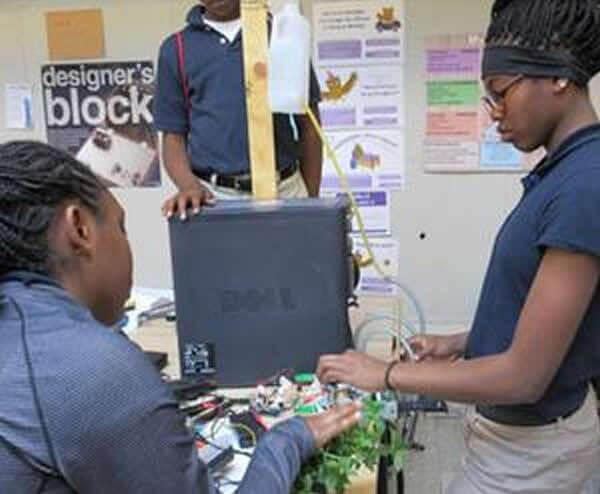Generative STEM: Circulating Unalienated Value in Education, Labor and Environment
Michael Lachney, Rensselaer Polytechnic Institute;Audrey Bennett, Rensselaer Polytechnic Institute; Daniel Lyles; Zoe Zatz, Rensselaer Polytechnic Institute; William Babbitt, Rensselaer Polytechnic Institute; David Banks, Rensselaer Polytechnic Institute; Ron Eglash, Rpi
Boston 2017: Pedagogy

Generative, bottom-up technosocial practices are growing topics of inquiry in STS, from DIY citizenship to the grassroots efforts of urban agriculture. Generative justice, a theoretical framework for understanding these phenomena, is defined as “the universal right to generate unalienated value and directly participate in its benefit; the rights of value generators to create their own conditions of production; and the rights of communities of value generation to nurture self-sustaining paths for its circulation.” This “Making and Doing” session reports on an effort that began in 2010, in which university faculty, graduate students and community members applied the framework of generative justice to re-conceptualizing the relation of K-12 STEM education to low-income community labor and environment. In contrast to the normative goals of serving national competitiveness, corporate profits or military supremacy, a generative approach to STEM seeks to return the value students and STEM researchers generate back to the communities where they live. The results have been encouraging: In our fieldwork in Ghana, the circulation of value links educational simulations of indigenous design with solar enhancement of sustainable textile fabrication and DIY condom vending machines. In African-American communities circulation of value includes educational simulations for cornrow braiding, quilting and graffiti; grassroots entrepreneurship in braiding shops and performing arts; and upcycling of e-waste in innovations for urban gardening. These and a wide range of other community-based innovations indicate that diverting STEM education and research from its current focus on value extraction, to an emphasis on unalienated value circulation, can both drive STEM research and bring us closer to a more just and sustainable future. Objectives: The goal of generative STEM is to enable a transformative change for science and technology research and education; one in which scientists and engineers, community members, and educators collaborate on innovation and discovery that can reduce value extraction in labor, ecosystems and social expression; and replace extraction with the circulation of unalienated value (e.g. commons-based production), thus benefitting the human and nonhuman agents which generated the value in the first place. Practices: Methodologies for generative STEM combine participatory design, ethnosciences (e.g. ethnomathematics, ethnocomputing); decolonizing research agendas, and related techniques and methods that offer collaborative approaches to decolonizing research agendas. Learning: Bi-lateral exchanges allow university faculty and students to challenge their own assumptions and understandings, and offer community educators and students the opportunity to develop a synthesis between normative STEM content—content one would expect to find on state-approved school tests—and counter-hegemonic content that is contextualized by their own community experiences, cultural heritages, and locally defined goals of value generation. Outcomes: Quantitative evaluations show statistically significant improvement for students, and some modest gains in earnings and environmental impact for local production. As school content is contextualized by community interests, the meaning and frame of STEM education becomes more relevant to students lived experiences, not only changing the structure of education but the meaning and location of STEM knowledge itself.
Published: 01/30/2023
